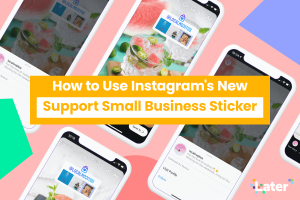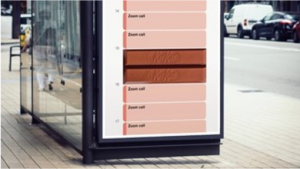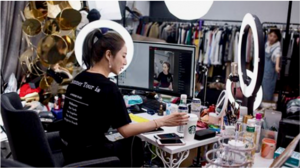Trend 1. The rebirth of community
What’s the societal shift?
We’re social creatures forced into isolation by COVID.
The world has shrunk to literally what’s on the doorstep.
Consumers feel emotionally vulnerable – support systems are gone, people are experiencing death and poor health, as well as closed schools, work insecurity and ‘ghost’ high streets.
Of course the immediate issue is COVID… but our human need for community and the identity and reassurance that brings, has long been challenged by globalisation and the dominance of mega corporations… COVID exacerbated an existing crisis
What’s the response?
Increased value in community, localisation, and mutual support is a positive response to the vulnerability – most tangibly seen across cultures with doorstep clapping, balcony singing, and a boom in volunteering. There’s a realisation that Society exists!
However, consumers are complex and there are tensions at play
- Looking inwardly and attending to echo chambers can be a jump off point for nativism and extremism – a darker, divisive take on community and identity
- Commercially, consumers face a dilemma – they want to support local, but the internet and Amazon offer frictionless, convenient, safe shopping
What does it mean for brands?
Brands can recognise the emotions at play, empower consumers, and soothe vulnerabilities by demonstrating values around community, empathy, mutual support and localisation
- Celebrating and supporting community spirit
- Conveying belonging, heritage, cooperation, togetherness, respect
- Addressing the imbalance between consumers and corporate power
- Acting, and enabling consumers to act locally
- Supporting local businesses and projects
- Exploring how online shopping can be executed on a localised level to benefit local communities
- Remaining positive and inclusive – avoiding any sense of exclusion and nativism


Trend 2. Desire for richer digital lives
What’s the societal shift?
COVID has seen a hyper acceleration in digital. Digital has been the lifeline, enabling social interaction, home working, schooling and shopping. Digital has helped consumers adjust to their shrunken world through wider connection and stimulation. It’s been a huge push.
However, for most consumers, a digital life has still meant a reduced life with less rich human contact and interaction. The loss is both tangible and intangible, impacting on enjoyment, mental health, productivity and our very identity – where the tide has moved, human needs have been exposed….
What’s the response?
Digital is evolving again, injecting more humanity into our digital lives
- ‘Gamification’ is overcoming ‘Zoom fatigue’ – meeting needs around engagement and spontaneity, and lightening the tone with fun filters, new ‘meeting’ styles and even goats for hire to ‘zoom bomb’ calls.
- In China the ‘livestreaming’ shopping phenomenon enriches the sterile online shopping experience by merging influencers, shopping and entertainment. It’s a low friction form of online shopping that delivers more of an experience, with demos from personalities building confidence in products (see Alibaba’s Ali Express Connect)
What does it mean for brands?
Brands can build a strongly empathetic consumer connection by reflecting the issue (see KitKat’s outdoor communication below).
Going forward, successful brands can learn from the livestreaming shopping phenomenon – recognising the different dimensions of loss consumers are experiencing to inform development of more meaningful brand connections.



Trend 3. The evolution of self-care
What’s the societal shift?
Self care is now firmly on the agenda. The motivation is more internal and holistic than ever before – emphasising physical and mental resilience and wellness over external ‘beauty’.
COVID has again accelerated the change, placing a focus on staying healthy, building immunity, reducing risks, staying safe, and managing anxiety, loneliness and depression.
What’s the response?
Consumers are prioritising and making time for self care. They are more aware of the relationship between diet, lifestyle and wellness, and the interdependence of physical and mental health. Approaches to health are increasingly structured, holistic and preventative, with consumers taking more active control e.g. with wearable tech and self monitoring.
And greater health involvement has increased interest in solutions that are ‘natural’ and work with the body’s own mechanisms.
What does it mean for brands?
- An opportunity for brands to support and enable self care.
- Emphasise the internal benefits of self care – e.g. resilience, wellness, well-being, longevity.
- Think holistically – in particular physical and mental connectedness is an interesting territory to explore.
- A role for education – consumers have often heard some of the story via various popular health trends, but can still need help from brands in joining the dots.
- Innovate around natural solutions that work with the body.
- There’s a role for tech to enable, empower and motivate.
- COVID has also meant a need for in home solutions.
Whilst motivation is higher than ever – consumers still stumble – this suggests opportunities for brands with simple, motivating propositions and convenient solutions to make self care easy, frictionless, joyful and celebratory (e.g. Mindful Chef / ‘Couch to 5k)









